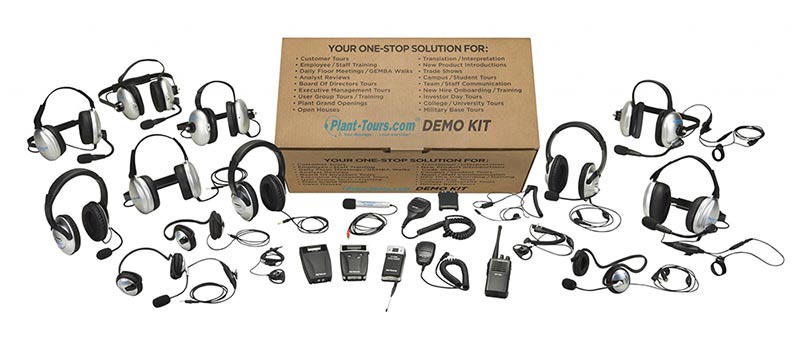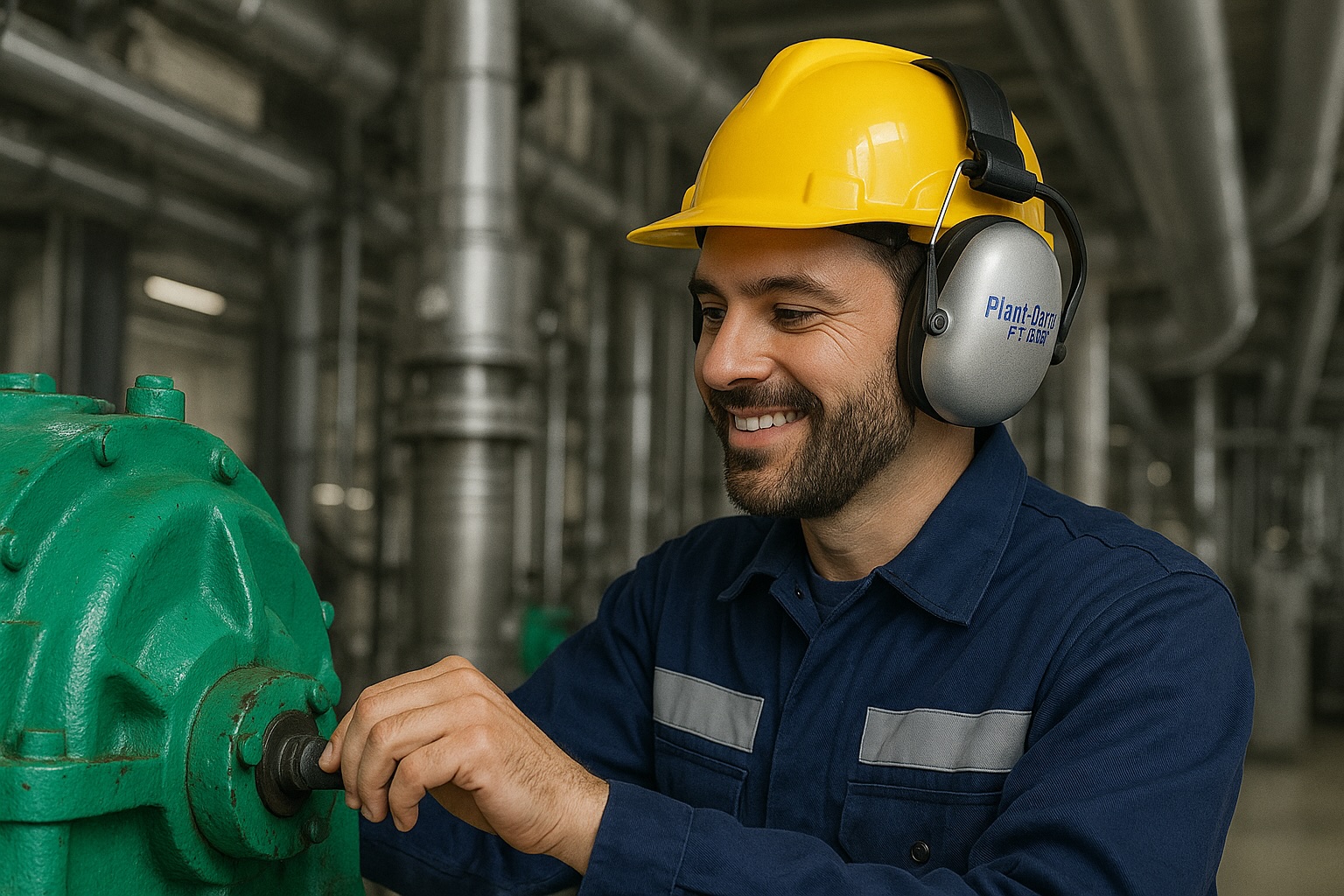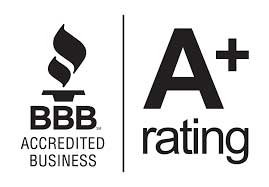According to the Harvard Business Review, plant tours are a “powerful way of developing a deep understanding” of your “ability to do things of value for customers that competitors cannot”. Take a deep-dive into why you should offer tours of your factory or facility to make your next visit a success.
Plant visits are a practical and productive way to showcase the capabilities of your facility. As someone who has advised countless businesses on the best way to do this, I have gained insight into what makes a successful walk through. In this guide, we will explore the reasons behind showcasing your facility and offer a step-by-step guide on how to do it. In addition, you can find more information within the Factory Tour Checklist that I have compiled to help you make your visits a success. Read on to learn more.
What is a Plant Visit?
Plant visits, also known as factory tours, are planned walk-throughs of a manufacturing facility or shop floor. They are usually organized to show customers, suppliers, investors, and other stakeholders an in-depth look at the daily operations of the business.
Generally speaking, they are designed offer the following insights:
- Observations on how products are made and the processes involved in their production.
- Education for potential and current clients, suppliers, partners, investors and other stakeholders.
- 360-degree vision of the manufacturing process for investors and executives.
- Interaction with team members and managers.
Having helped hundreds of businesses organize plant tours, I’ve seen how a well-planned visit can create lasting value for your organization and its partners. Put simply, it makes it easier for executives and other stakeholders to see inside how the plant functions and obtain an improved understanding of the production potential of the business.
While no two sets of visitors are the same, that doesn’t mean you need to fully evolve your plant tour for every single client that comes in. Instead, you can create a handful of tour types that focus on different elements of your facility. This way, based on the tour guests, you can select the tour that best fits the visitor’s needs. Examples of successful plant tours include:
- Learning tours for company leaders and investors
- Assessment tours for customers
- Teaching tours for team members and students
- GEMBA Walks
What is the Purpose of a Plant Visit?
Plant visits and factory tours offer a broad range of benefits, and our clients are often keen to tell us how they have helped them demonstrate their strengths, innovations, and commitments to quality. Below, we look at some of the key reasons to provide your visitors with engaging facility tours.
1. Understand the Production Process
By offering plant tours, you can give your visitors the opportunity to gain a deeper understanding of production processes. This means observing how raw materials are transformed into finished products on the shop floor, fostering transparency and trust.
Our clients suggest providing demos of high-quality manufacturing practices, giving Q&A sessions, and allowing real-time operations and production processes to be seen in person. This firsthand experience is especially valuable and ensures
2. Build a Personal Connection
Personal connections with stakeholders are important, and can mean the difference between success and failure. Whether it’s potential clients, suppliers, or investors, inviting them to your manufacturing plant creates a two-way exchange that goes beyond formal business meetings.
Our clients tell us that walking tours allow for more informal conversations, fostering deeper relationships. Additionally, allowing conversation with team members on the floor can offer unique perspectives that enhance understanding of company culture and operations.
3. Get Real-Time Quality Assurance
For customers and stakeholders, visiting a manufacturing facility provides a real-time look at the company’s quality control processes. They can observe how quality is managed throughout the production process, ensuring that the products meet high standards.
We suggest that plant managers can also use this opportunity to highlight their continuous improvement efforts, showing visitors how they address potential issues proactively. In addition, our customers tell us that it is an invaluable process for identifying inefficiencies.
4. Collaborate and Solve Problems
Plant tours often provide a platform for solving problems collaboratively. When customers, suppliers, or even team members see the production process up close, they may identify opportunities for improving efficiency or overcoming challenges.
A face-to-face tour creates a setting where stakeholders can share feedback, offer solutions, and work together to optimize the manufacturing process. We suggest that truly collaborative tours should be the backbone of your design.
5. Enhance Communication and Negotiation
A plant visit offers an ideal setting for open communication and negotiation. Visitors can ask questions, clarify doubts, and engage in productive discussions with plant managers and team members.
We have seen first hand how factory tours promote clear communication and can even expedite negotiations, giving stakeholders the chance to see how processes are managed.
6. Build Market Intelligence
During a plant tour, visitors can gain valuable market intelligence, and our customers suggest that they form an integral part of . They may learn about the latest trends in manufacturing, technological advancements, and the unique processes that differentiate one company from another.
By observing how the facility operates, your visitors will gain insights that can inform their own business strategies and improve your partnership together. .
7. Demonstrate Brand Integrity
For manufacturing companies, brand integrity is crucial. Inviting your stakeholders to tour the facility allows them to see that the company is true to its stated values, such as sustainability, safety, and ethical practices.
Our customers suggest that a well-organized plant tour shows that the company is open about its operations and is proud of its processes. This level of transparency can enhance your company’s reputation and differentiate it from competitors.
8. Improve Innovation and Development
Plant visits can serve as a catalyst for innovation. When stakeholders are exposed to the company’s manufacturing capabilities and challenges, they may offer creative ideas for product development or process improvements.
Additionally, our client’s tour guides and plant managers’ have intimated that tours can be an opportunity to highlight recent innovations, creating excitement about future opportunities.
How to Conduct a Plant Visit – Step by Step
A good plant visit is like telling a story. The visitor should connect with your story because it draws them in and relates to their wants and needs. Setting the stage for the story you want to tell begins with the design of your invitation and should conclude with a social media recap at the end of the event when it is appropriate to do so.
After consulting with clients across a huge range of industries and sectors, we have compiled a simple step-by-step guide for you to follow. We suggest that you use these steps as a baseline for your next facility tour, tailoring each section to your specific requirements. Read on to learn more.
1. Plan Ahead
The first step to a successful plant tour is thorough planning. This includes identifying the goals of the visit, the stakeholders you wish to invite, and the key areas of the manufacturing facility that you want to showcase. In addition, we suggest that you introduce high-quality tour guide systems to deliver clear and collaborative communication capabilities. This can include:
- One-Way Tour Guide Systems — Ideal for improving communication between your tour guide and participants.
- Two-Way Tour Guide Systems — Perfect for Q&A sessions and other collaborative facility tours.
2. Prepare Your Facility
Before the tour takes place, ensure your facility is clean, safe, and ready for visitors. This includes organizing the shop floor, ensuring that all equipment is functioning correctly, and providing proper PPE (personal protective equipment), such as safety glasses and headsets for the visitors. Ensure that safety procedures are in place and that all plant managers and team members are briefed.
3. Design a Structured Tour
The tour should follow a well-organized route, with clear stops at key points in the production process. Our clients tell us that a successful plant tour should guide visitors through each stage of the manufacturing process, with a logical flow that highlights important aspects of the facility.
4. Educate Your Tour Guides
Choose knowledgeable team members to act as tour guides. These individuals should be well-versed in the company’s operations and able to answer questions about the manufacturing process, safety protocols, and quality control measures. We also recommend that they receive in-depth training on the tour guide system to ensure there are no technical issues during the tour.
5. Focus on Safety
Manufacturing facility safety should be a top priority during the tour. Ensure that all visitors are provided with appropriate PPE, such as safety glasses and hard hats, and that they are informed about safety protocols. Plant managers should also ensure that team members are aware of the tour and prepared to operate safely in front of visitors. Again, we recommend that tour guide systems allow for situation awareness while also being able to reliably alert guests to hazards.
6. Communicate Clearly
Clear communication is essential for a successful plant visit. Provide supporting materials, such as brochures or diagrams, to help visitors better understand the production process. Additionally, we advise our clients that it is crucial to ensure that the tour guide speaks clearly, using headsets suitable for the noise levels in the facility. Headsets designed for all types of environment include:
7. Personalize the Experience
Whenever possible, our clients suggest that you should personalize the plant tour experience for your visitors. If you are hosting a group of potential clients, focus on showcasing how your facility can meet their specific needs. Tailoring the tour to your audience will make the experience more memorable and relevant.
8. Encourage Interaction
A two-way exchange during the tour is vital, and we suggest that Q&A sessions should be used wherever possible. Encourage visitors to ask questions, share feedback, and interact with team members on the shop floor. This not only improves engagement but also allows visitors to gain a deeper understanding of the production process and the company’s operations.
9. Provide Supporting Materials
After the tour, provide visitors with materials that reinforce what they’ve seen. This can include product samples, company brochures, or detailed documentation of the manufacturing process. Offering these materials adds value to the plant tour and gives visitors a lasting reference.
10. Follow Up
After the plant visit, follow up with the attendees to thank them for their time and gather feedback. This follow-up is essential for building long-term relationships and ensuring that the visit met the visitors’ expectations. It also opens the door for future collaboration and business opportunities.
To conclude, during a plant visit you also need to have an understanding of what industry the client is coming from and how they will use the products you produce in the plant. With this in mind, you can then adjust the plant tour to better highlight the most relevant information to the client. With a structured story, the client will be able to follow along and understand how everything you point out and talk about will affect their own companies. This will make more effective use of the tour in educating your visitors.
From two-way audio systems to headphones that fit around hard hats and provide hearing protection, there is no shortage of microphone, speaker, and headphone designs available. So, if you’re looking to enhance the experience of those touring your plant, contact us today.










